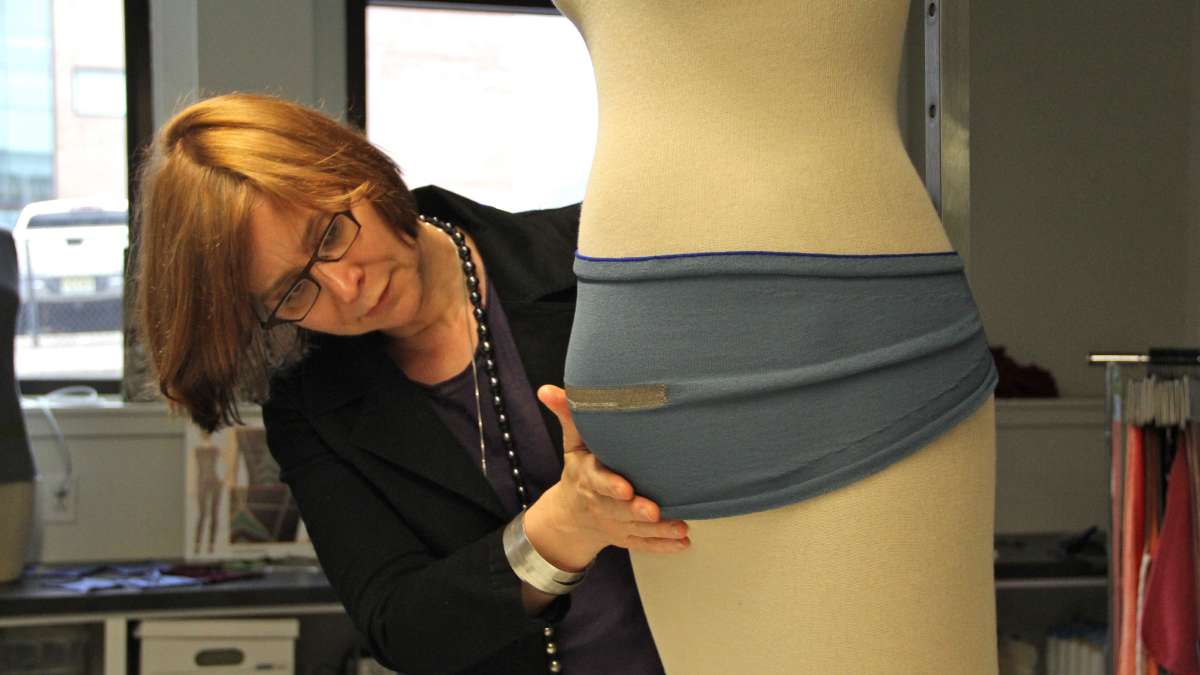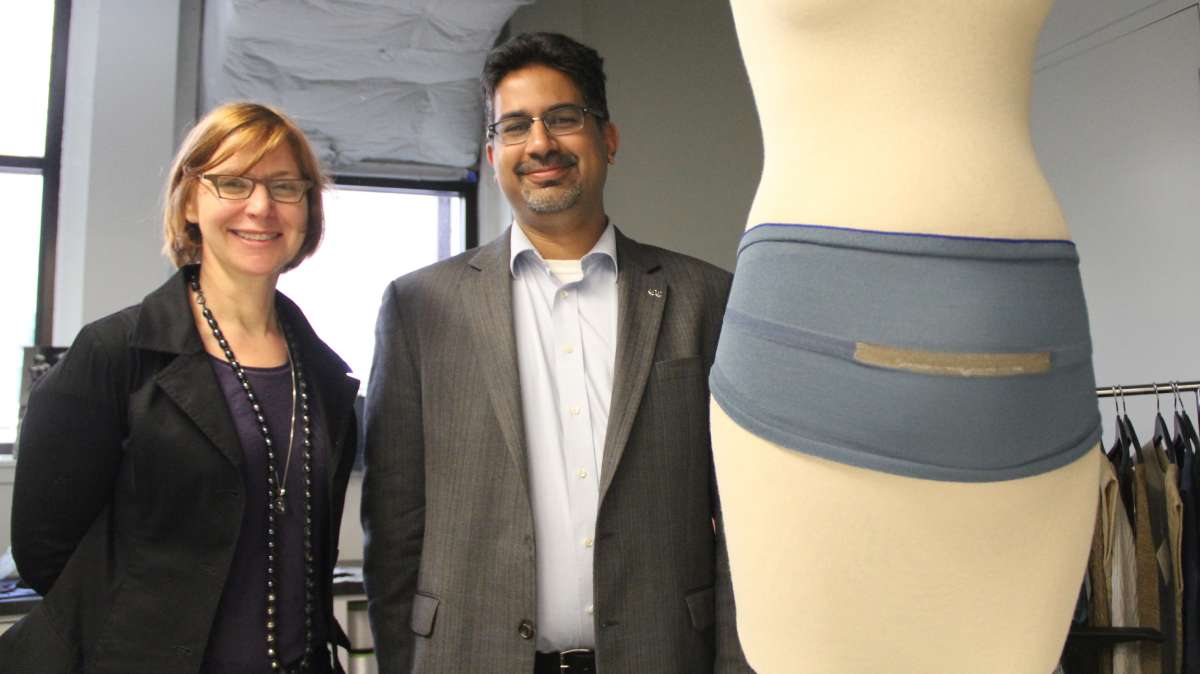Drexel team develops ‘belly band’ to monitor contractions of pregnant women
In the hospital, keeping tabs on labor contractions usually requires a woman to stay strapped in bed with a bulky belt. Now, a team at Drexel University is combining engineering and medicine with fashion to create a smart fabric that offers a more comfortable alternative.
Currently in the prototype stage, the belly band in Drexel’s Shima Seiki Haute Technology Lab doesn’t look all that different from other stretchy sportswear.
“You can see there’s no glue, there’s no soldering, there’s not knotting in the band or anything like that,” said designer and director of the lab, Genevieve Dion. “So the entire fabric is the device itself.”
But special conductive threads are knitted into a type of an antenna. Together with an extremely small chip to transmit information, the band acts as a passive RFID, or radio frequency identification, tag.
“What happens is that, as the tag stretches, the radiating characteristics of the antenna change, and the RFID will send information,” said electrical and computer engineer Kapil Dandekar. “By looking at the way that information changes, we can infer what’s happening underneath in terms of the biology, looking for uterine contractions.”
Dandekar said the technology is similar to the E-ZPass system that allows drivers to wirelessly pay tolls.
In trying to make the band as safe and comfortable as possible, the engineers, who also included Adam Fontecchio and Timothy Kurzweg, were able to eliminate the need for any batteries.
“You don’t have to carry around a fanny pack that has lots of electronics. All of the complexity is in an external transmitter,” said Dandekar. “And that transmitter actually sends information to the passive RFID, and that energy is used to power the retransmission.”
The obstetrician and gynecologist working on the project, Owen Montgomery, said the band will be used first in hospitals so pregnant women can walk around and use the bathroom while still being monitored. That could be as early as 2017.
“We have patients in the hospital sometimes for several days and even weeks, and a comfortable, washable, wearable device would be very desirable,” he said. “Every pregnant woman who sees the device, who’s been in labor and had the straps on her abdomen, immediately sees the advantage and the desirability of it.”
Later, Montgomery said high-risk patients at home might use the band. The multidisciplinary team hopes to do clinical testing this summer, and eventually add fetal heart-rate monitoring as well.
WHYY is your source for fact-based, in-depth journalism and information. As a nonprofit organization, we rely on financial support from readers like you. Please give today.










